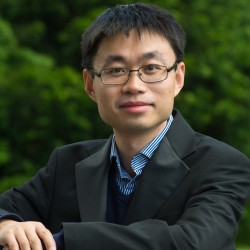Helping perovskite solar cells reach their potential
A new critical review from the University of Surrey has set out a potential roadmap to help the next generation of solar cells reach their full potential.
Perovskite solar cells have emerged as the heir apparent to their silicon-based counterparts because of their high-power energy conversion efficiency, low development cost, and ability to be ultra-lightweight.
Named after a naturally occurring mineral that shares a structurally similar chemical formula, perovskites are synthetic composites that have three- dimensional lattice crystal structures.
In the critical review, which has been published by Materials Today, researchers from Surrey’s Advanced Technology Institute (ATI) and the Institute of Metal Research from the Chinese Academy of Sciences, discuss the current challenges that perovskite solar cells face – particularly flexible solar cells.
The paper explains that rigid perovskite cell devices have achieved power conversion efficiency of 25 percent, while flexible devices reach 19 percent. The researchers from Surrey argue that while these figures show significant advancement of the technology, flexible perovskite solar cells are lagging behind and it is important to give that area a knowledge boost.
The review focuses on how to accelerate the knowledge transfer towards future generations of flexible perovskite solar cells and it combines efforts between leading academic and industrial partners within the photovoltaic community.
Professor Ravi Silva, Director of the ATI at the University of Surrey, said: “Our organisation has always believed in the potential of solar panels to be a critical part of the energy mix that finally allows us all to move away from fossil fuels. However, we must do more to improve the power conversion efficiency of these promising devices and we hope this critical paper helps pave the way for those advancements.”
Dr. Wei Zhang, Lecturer (Assistant Professor) at the ATI at the University of Surrey, said: “The future applications of flexible perovskite solar cells are not limited to powering up portable electronics and household appliances. They are capable of integrating with exciting technologies such as spacecrafts, E-skin, and the Internet of Things. We are excited to witness the evolution of this emerging field and its journey from lab to fab.”
Featured Academics
Media Contacts
External Communications and PR team
Phone: +44 (0)1483 684380 / 688914 / 684378
Email: mediarelations@surrey.ac.uk
Out of hours: +44 (0)7773 479911

